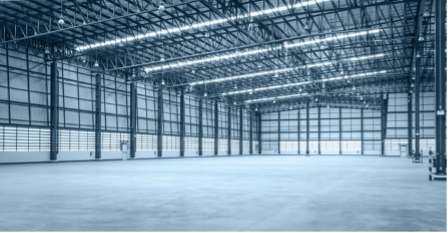The Bright Spot in Commercial Real Estate Right Now
With all the recent worries about defaults and higher interest rates leading to lower valuations in commercial real estate, investors may wonder if it is worth considering the asset class in the current environment. However, commercial real estate is a broad definition with many asset classes including office, multifamily, industrial, retail, healthcare, hospitality, etc.
We believe active management is important with any asset class, especially when it comes to security selection. That is why we’ve avoided most commercial real estate asset classes–with the exception of industrials, where we are overweight. For example, we made the case back in November 2022, asking is Mexico the next China?
To help understand our investment logic, here are some tailwinds and headwinds facing owners of industrial real estate:
Short Term Tailwinds
- New supply is constrained due to tight development financing & increased labor costs.
- Inventory rebuild across industries (especially with change from just-in-time to just-in-case inventory).
- Net absorption is skewed towards Class-A space, which is still capacity-constrained.
Short Term Headwinds
- US vacancies are below long-term averages. Reversion to the mean suggests there may be some short-term normalization of trends. (3.4% vs. 6.8%, respectively)
- Rationalization of overcapacity brought on by higher levels of demand related to COVID.
- Near-term valuations facing the impact of lower appraisals due to higher discount rates to value new, longer leases, despite steady cash flows.
- Refinancing risk at higher rates impairs profitability.
Long Term Tailwinds
- Continued consumer spending to drive increased warehousing needs. (eCommerce)
- Global movement to onshore manufacturing locally.
- Approximately 28% of available US warehouse space is almost 50 years old, considered technologically obsolete, and likely to be replaced.
- Supply chain diversification.
Long-Term Headwinds
- Local and environmental opposition to new projects.
- Other competing real asset classes become more attractive over time as issues resolve.
- Move to longer leases (5 Yr. vs. 3 Yr.) to decrease the frequency of rent increases in the industrial space.
To summarize, we believe supply will continue to be constrained, movement to Class-A space will require new building, demand will persist due to manufacturing onshoring and eCommerce, and the supply chain diversification will continue to drive long-term demand in industrial real estate.
There may be short term headwinds, but overall, the space should continue to grow and presents a potential benefit to an investor’s portfolio.
Are you a Financial Professional? Then check out our new portal and get all kinds of tools and resources on multi-strategy investing, and growth.
Validus Growth Investors, LLC seeks to invest in companies at every stage of their growth. From startups to publicly traded companies, our research identifies inflection points that have the potential to produce meaningful growth and income for the clients we serve.
Investment Advisory Services are offered through Validus Growth Investors, LLC (“Validus”), an SEC Registered Investment Adviser. No offer is made to buy or sell any security or investment product. This is not a solicitation to invest in any security or any investment product of Validus. Validus does not provide tax or legal advice. Consult with your tax advisor or attorney regarding specific situations. Intended for educational purposes only and not intended as individualized advice or a guarantee that you will achieve a desired result. Opinions expressed are subject to change without notice. Investing involves risk, including the potential loss of principal. No investment can guarantee a profit or protect against loss in periods of declining value. All information is believed to be from reliable sources; however, we make no representation as to its completeness or accuracy. Opinions and projections are as of the date of their first inclusion herein and are subject to change without notice to the reader. As with any analysis of economic and market data, it is important to remember that past performance is no guarantee of future results.


